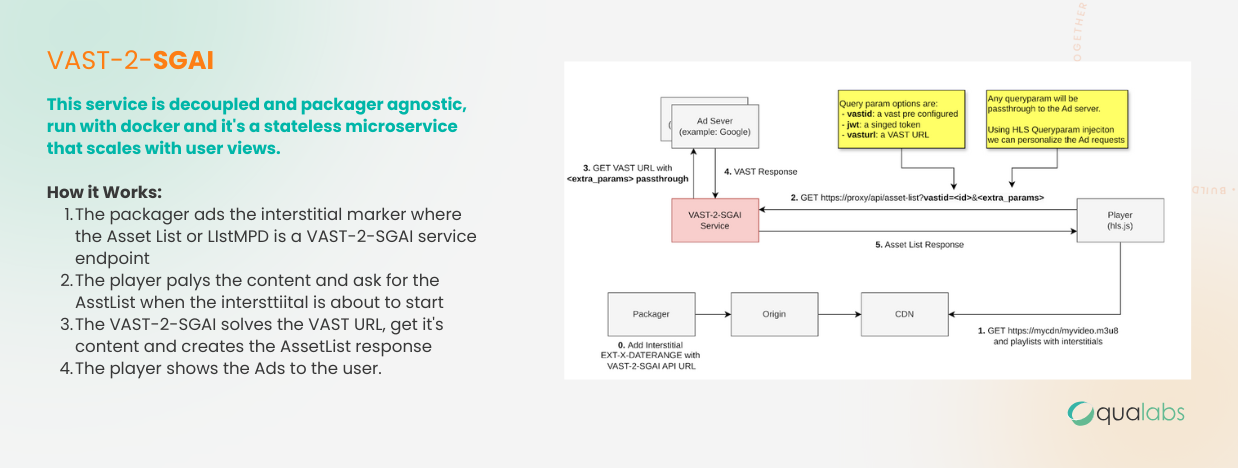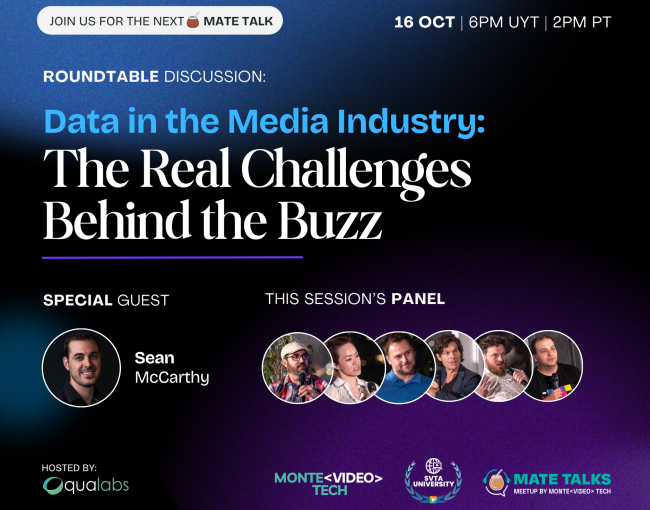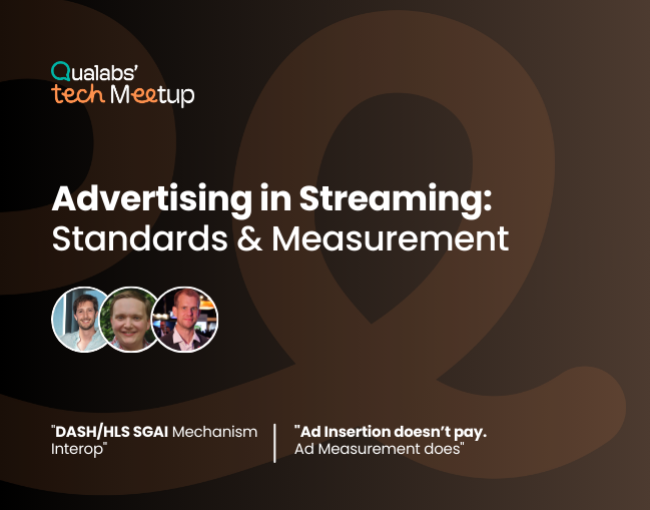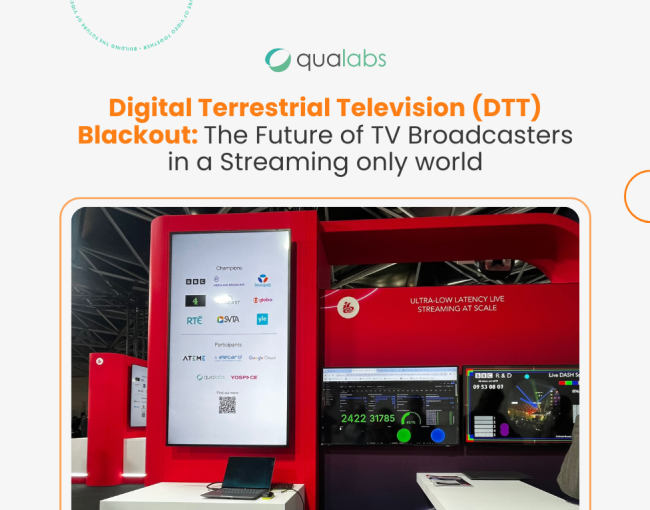The Monetization is no longer just about showing ads—it's about delivering them smartly, efficiently, and seamlessly. As the industry looks beyond traditional client-side or even server-side ad insertion models, a new paradigm is taking hold: Server-Guided Ad Insertion (SGAI).
SGAI offers a modern, flexible way to control ad experiences from the server while preserving the scalability and consistency of client-side rendering. And at the forefront of this evolution is Qualabs, a video engineering powerhouse delivering open source solutions that bring SGAI to life.
What is SGAI — and why does it matter?
Server-Guided Ad Insertion (SGAI) is a hybrid model designed to bring server-side control to client-side rendering. Traditional SSAI (Server-Side Ad Insertion) stitches ads directly into video content, which can be costly and rigid. SGAI, instead, uses manifest-level instructions to guide clients in rendering ads without needing to manipulate the media stream.
Think of it as server-orchestrated ad logic, but with the flexibility of lightweight client-side execution. For example, in HLS, ad breaks are represented using EXT-X-DATERANGE, while in MPEG-DASH, EventStream markers signal ad opportunities. This architecture allows for:
- Seamless ad transitions,
- Personalization at the client level,
- Low latency playback,
- Reduced infrastructure overhead.

From VAST to SGAI: bridging standards with Open Source
One of the standout projects from Summer Camp 2025 was the VAST-2-SGAI Service. Built as an open source microservice, this proxy translates VAST (Video Ad Serving Template) responses — the industry standard for ad metadata — into SGAI-compatible ad lists.
Summer Project team with David Hassoun as a tech sponsor developed this to help streaming platforms that already use VAST make a smooth transition to the SGAI paradigm without overhauling their monetization infrastructure. The service:
- Parses standard VAST responses from ad servers,
- Converts them into JSON ad break lists with precise timing,
- Supports integration in both HLS and DASH streaming contexts.
This service laid the foundation for a modular, interoperable ad tech ecosystem. Learn more about it on the VAST-2-SGAI.
Try the example or Check out our GitHub Repository

Real-Time HLS Ad Insertion: Wowza Plugin + VAST-2-SGAI Integration
To put the VAST-2-SGAI service into action, the team integrated it with Wowza Streaming Engine, using its plugin architecture to inject EXT-X-DATERANGE tags into HLS manifests. These tags define interstitial ad breaks, which are interpreted by players like hls.js with no need for custom code.
This plugin supports two flexible modes of operation:
- Detecting ad signals (e.g., SCTE-35 markers) from the live stream
- Or triggering ads through a custom HTTP endpoint exposed by the plugin.
The Power of Plugin Architecture Wowza’s plugin system was the perfect playground for innovation. + With this custom module, Qualabs enabled frame-accurate, server-guided ad breaks that play seamlessly on the client side.
The plugin is available, open source, and ready to test. It exemplifies the kind of modular, standards-compliant ad insertion that SGAI enables, with low latency and broad compatibility.
Explore the solution: Wowza HLS Plugin
Bringing SGAI to MPEG-DASH: A standards aligned leap forward
While Server-Guided Ad Insertion (SGAI) has seen increasing adoption in HLS-based workflows, bringing the same level of flexibility and server-side control to MPEG-DASH was a much-needed next step — and Qualabs made it happen.
This project, also developed in the context of the MonteVIDEO Summer Camp 2025, expanded the original VAST-2-SGAI vision into the world of CMAF-compliant DASH streaming, delivering a full proof-of-concept demo using dash.js.Why MPEG-DASH Matters for SGAI
SGAI in MPEG-DASH: Standards-Based Expansion
While SGAI gained traction in HLS, Qualabs extended the model to MPEG-DASH, ensuring consistent monetization capabilities across formats. Using CMAF-compliant practices and EventStream elements in the manifest, the team built a fully functional DASH demo powered by dash.js.
This expansion addressed a major gap: DASH lacked a native way to define ad breaks without modifying the media stream. Now, through SGAI:
- Ad events are encoded directly in the manifest,
- The client receives clear, time-aligned ad signals,
- Playback remains adaptive and seamless.
This was not a theoretical test — it’s a reference implementation for scalable, client-agnostic ad insertion in DASH. See the DASH Demo
.png)




